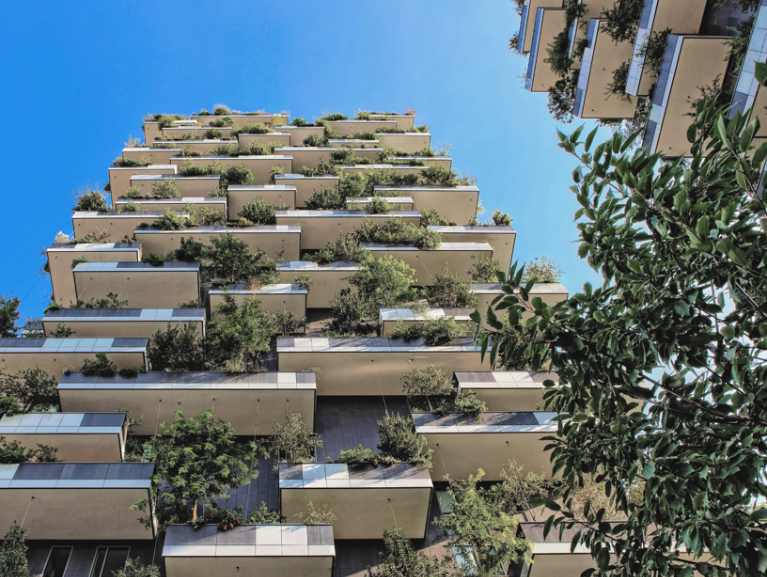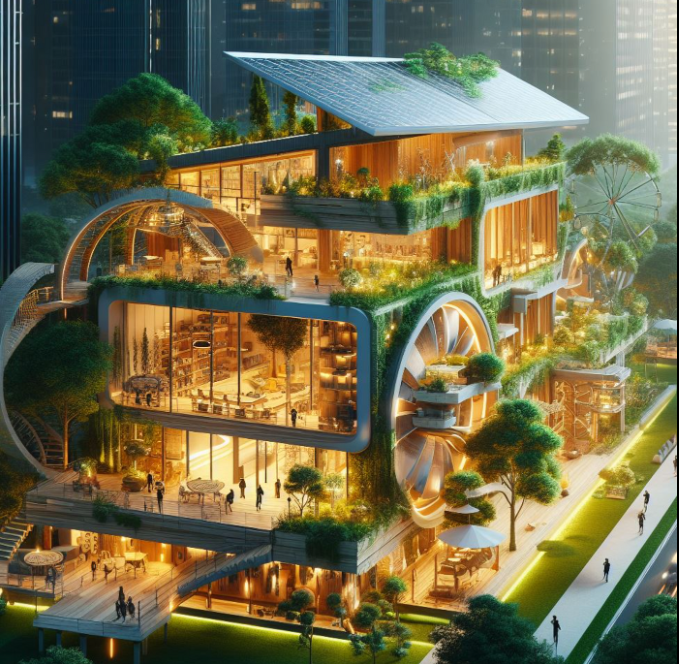In recent years, a growing emphasis on environmental sustainability has driven architectural innovation towards the development of eco-friendly and sustainable building practices. As the impact of climate change becomes increasingly evident, the architecture industry has responded by embracing innovative approaches that prioritize ecological responsibility, resource conservation, and energy efficiency. These advancements are shaping the future of architectural design, paving the way for a built environment that is in harmony with nature and resilient to the challenges of a rapidly changing world.

Passive Design and Bioclimatic Principles:
Architects are increasingly integrating passive design and bioclimatic principles into building design. This approach leverages the local climate, orientation, and natural elements to optimize thermal comfort, natural lighting, and energy efficiency. Passive solar design, natural ventilation, and building orientation are key elements of this approach, allowing for reduced energy consumption and a more comfortable indoor environment.
Construction Techniques:
The use of sustainable materials, such as reclaimed wood, recycled steel, and low-impact concrete, is becoming increasingly prevalent in eco-friendly architecture. Additionally, innovative construction techniques, including prefabrication, modular construction, and 3D printing technology, are reducing waste and enhancing efficiency in the building process.
Green Building Certifications and Standards:
Architects and developers are increasingly seeking green building certifications, such as LEED (Leadership in Energy and Environmental Design) and BREEAM (Building Research Establishment Environmental Assessment Method), to validate their commitment to sustainable design. Adhering to these standards encourages the implementation of environmentally friendly building practices and ensures a high level of environmental performance for constructed buildings.
Renewable Energy Integration:
The integration of renewable energy technologies, such as solar panels, wind turbines, and geothermal systems, allows buildings to generate clean and sustainable energy on-site. This approach reduces reliance on fossil fuels, lowers carbon emissions, and contributes to a more resilient and decentralized energy infrastructure.
Green Roofs and Living Walls:
Architects are incorporating green roofs and living walls into building designs to reduce urban heat island effects, improve air quality, and contribute to urban biodiversity. These green interventions enhance the ecological performance of buildings while creating visually appealing and functional outdoor spaces.
Innovative Water Management:
Eco-friendly architecture includes innovative water management strategies that promote efficient water use, rainwater harvesting, and the implementation of greywater systems. Sustainable landscape design and stormwater management techniques also contribute to the conservation and responsible management of water resources.
Adaptive Reuse and Circular Economy Principles:
The adaptive reuse of existing structures and the integration of circular economy principles are promoting a shift towards a more sustainable and resource-efficient building sector. Embracing the reuse, repurposing, and recycling of building materials and components reduces waste and contributes to a more sustainable approach to construction and development.
In conclusion, innovative eco-friendly architecture is shaping a sustainable future for the built environment. By embracing passive design, sustainable materials, renewable energy, green certifications, and circular economy principles, architects are facilitating a transition towards environmentally responsible and resilient building practices. This commitment to sustainable design is driving a paradigm shift in the architectural industry, paving the way for a built environment that is in harmony with the natural world and supportive of a sustainable future for generations to come.
